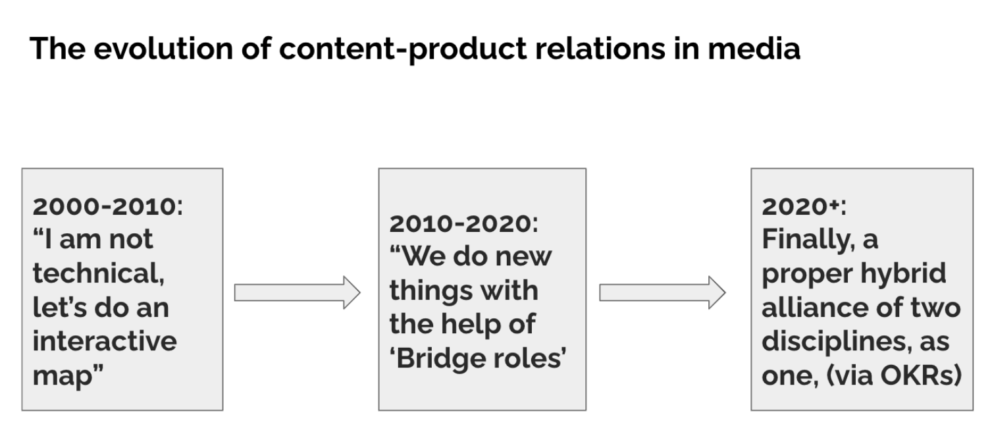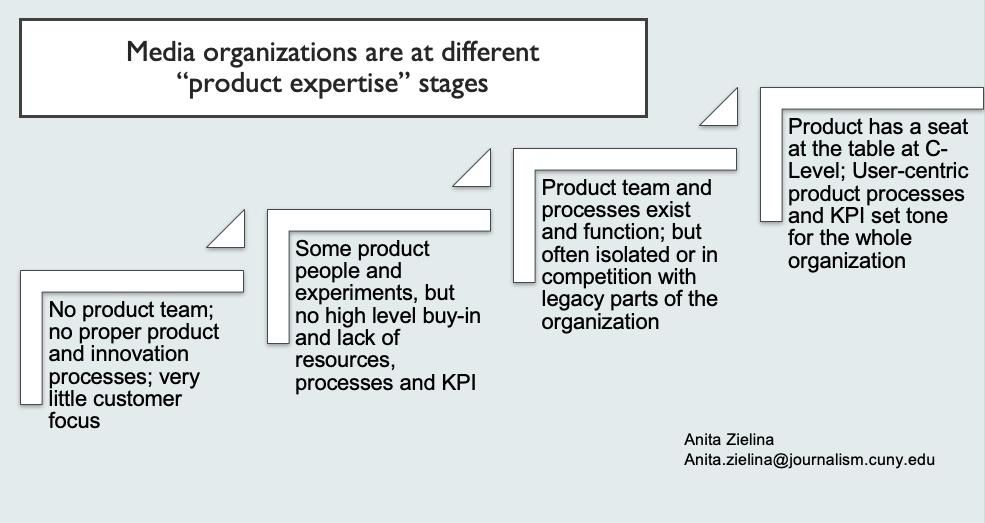Blog
“Product is queen”: thoughts on the role product plays in news
Awareness of the importance of product thinking has been growing in recent years, and in 2020 we saw the launch of the News Product Alliance which will help bring the media industry’s understanding of product forward.
Product will drive the industry because we need to have the customer at the centre of everything. I once heard content is king, but product is queen, and I really agree with that.
Luciana Cardoso, Chief Product Owner at Estadão
Today we are digging into why product truly is queen and why investing in your product experiences, as well as your product teams, is crucial.
Content vs. product
There have been discussions in the past on what actually product even is in a journalism context, is the content the product or is the actual technology the product? But at the end of the day, this distinction isn’t necessary. Product is whatever the user experiences it as. This is important to note, because good content alone is not enough to overcome a poor technology experience.
For Dmitry Shishkin, that is why it is important to have both content and product aligned; otherwise it won’t be possible to succeed in the long run. The relationship between these two disciplines has evolved over the past 20 years, bringing us to today where there can be a true hybrid alliance between product and content.
That’s why at Culture Trip for example, they do not pit content versus product.
We don’t think in terms of ‘content’ or ‘product’; we create content products, each designed to fulfil a user need by leveraging content.
Ana Jakimovska, Chief Product and Technology Officer at Culture Trip
Once news organisations can agree on the interconnection between content and product, then they can focus on the other important challenges they face in bringing product thinking to the whole company.
Big tech set expectations
It’s becoming clearer and clearer that the biggest competitors publishers face today are tech giants, not other newspapers. Tech giants like Facebook or Netflix shape the expectations of readers. Audiences expect high quality and well designed experiences wherever they consume content, whether that be on Instagram, Spotify or the digital version of their local newspaper. Just as Netflix says its biggest competitor is ‘sleep’, publishers building subscription based strategies are in competition with all other subscription products. Of course these are huge technology powerhouses and it can feel daunting to even start thinking about building products that compete in this way. But this isn’t to say that publishers need to invest at the same level in technology and product improvements as the big tech. It’s rather a call for taking the opportunity to learn and leverage knowledge that can be easily applied.
One of the key trends we have seen across platforms in recent years is about streamlining and ease of use. Publishers have already started to learn from this example and using it as inspiration to experiment with new ways of reducing product friction for readers. The New York Times found that allowing users to login via clicking a link in an email (“magic linking”) had a 2% lift in successful logins, while The Wall Street Journal was able to increase app downloads by 450% through using link texting for app downloads. Improved product experiences encourage readers to consume more content, something The Telegraph saw when they optimised their homepage speed (going from 9 seconds to load to 5.5 seconds) and had a 12% increase in pageviews from subscribers.
Additionally, having consumer expectations shaped by tech giants has also benefited publishers by increasing the adoption of subscription based models among readers. Previous research has shown that countries with higher levels of Spotify and Netflix subscriptions have populations that are also more likely to pay for online news.

Investing in product managers
Today successful publishers are the ones that already know the importance of investing in product experiences. But just this awareness alone is not enough. Anita Zielina shared recently a scale for understanding product thinking maturity in news organisations; today she sees very few organisations at the high end of the scale.
To truly reach product maturity, publishers need to invest in their product teams themselves. It is an encouraging sign to see in a recent survey of media executives by RISJ that 93% of respondents believe the product manager role is important for coordinating and shaping digital innovation. That’s why it is perhaps surprising to see in the same survey that less than half (43%) of the surveyed media executives think the product manager role is well understood in their company and that 54% feel their current product managers often lack the right skills.
The origin of the term ‘product manager’ might provide insight into this gap. As Lucy Kueng explored recently in her report on cultural transformation, the title ‘product manager’ is something borrowed from Silicon Valley. What it means to be a product manager at a technology company is very different than how these roles have evolved at news organisations so far. One of the key challenges faced in product roles at news organisations is explaining exactly what the role even is. Is a product manager part of the tech team? Or the marketing team? Or maybe it is even an editorial role. This is a symptom of a larger organisational problem: newspapers aren’t clear on why they should have product roles but they see how important they’ve been in Silicon Valley.
That’s why it is interesting that a survey from the News Product Alliance found that most of their members (70%) don’t even have the word product in their job title, even though they are active members of the organisation. This can be seen as encouraging, that even if organisations themselves may not have matured in their product thinking, the people themselves have. Without product directly in their purview, many people in the industry are still imbuing product thinking in their strategies.
Anyone in a newsroom can do product thinking. It’s really about trying to think holistically about the needs of the audience, the mission and business interests of the organization, and technically how you’re going to get things done and bringing that together in a holistic way to create a comprehensive strategy for your organization.
Becca Aaronson, Interim president of News Product Alliance
Other Blog Posts

Stay on top of the game
Subscribe to Twipe’s weekly newsletter to receive industry insights, case studies, and event invitations.
"(Required)" indicates required fields



